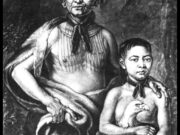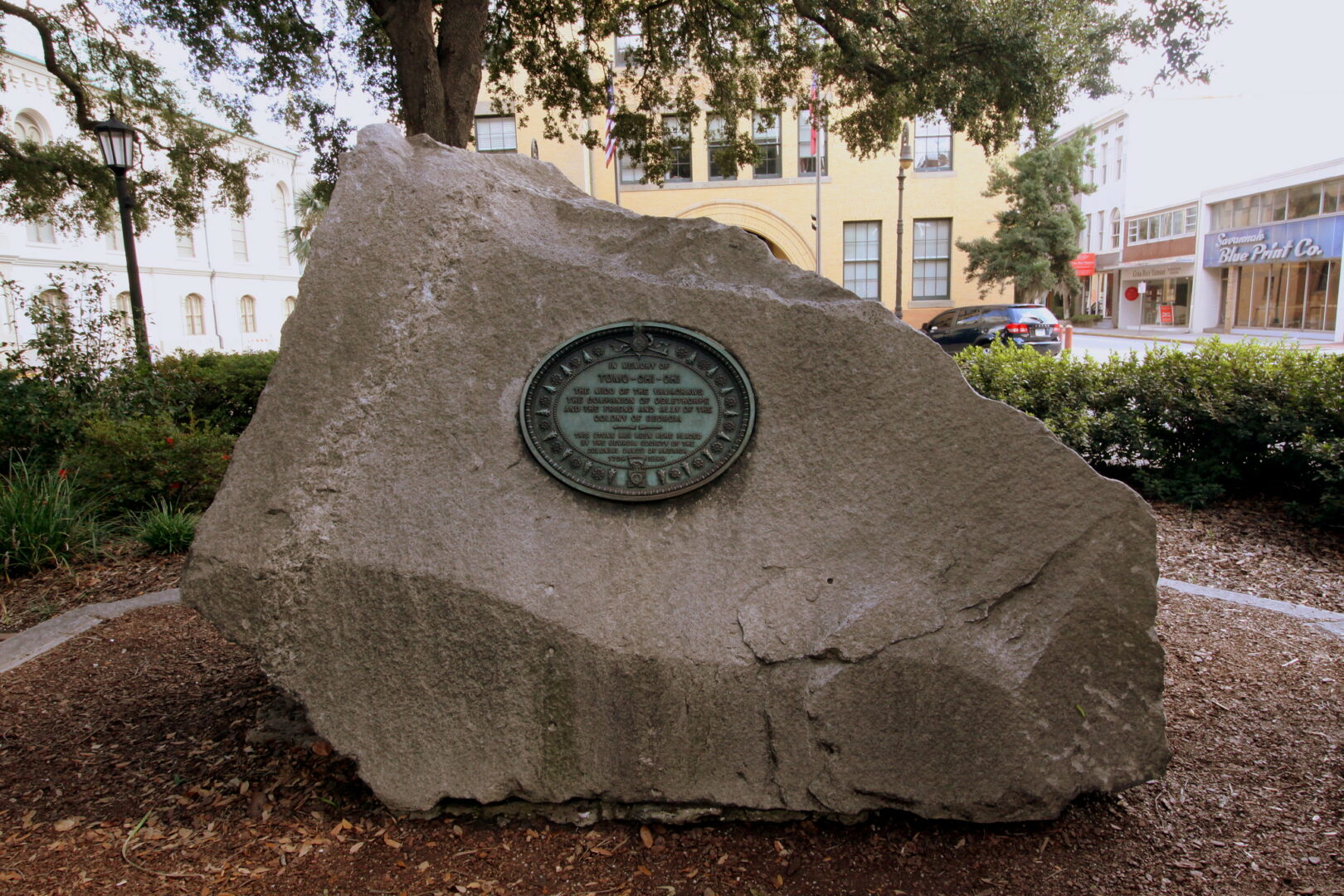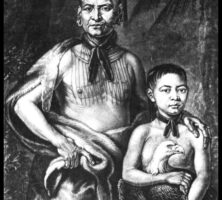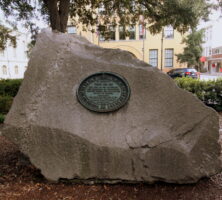Tomochichi was the leader of the Yamacraw Indians and a prominent figure in early Georgia history.
As a principal mediator between the native Creek (Muscogee) and British colonists, he contributed to the establishment of peaceful relations between the two groups during the first years of British settlement.
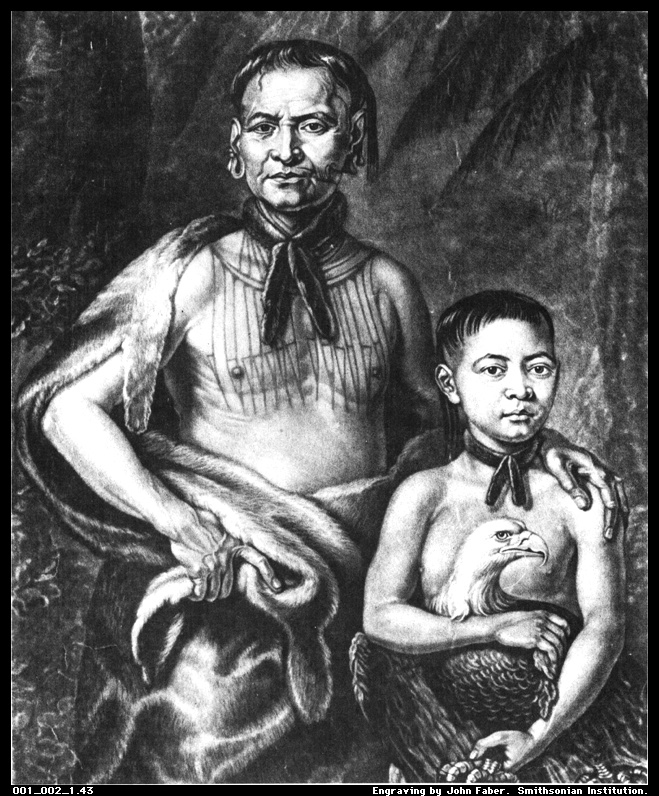
Early Life
Little is known about Tomochichi’s youth because of the absence of accurate documentation. Born sometime in the mid-1600s, he was most likely of Creek ancestry and his father may have been Yamasee.
In eighteenth-century coastal Georgia, native groups interacted frequently, sometimes becoming entwined as new communities formed. In the wake of the Yamasee War (1715-17), most Yamasees moved south to strengthen their trading relationship with the Spanish. At the same time, many Creeks relocated to the Chattahoochee River basin to negotiate with British, Spanish, and French traders. Still others preferred to break from existing groups and create communities that reflected their kinship networks, trade policies, and politics. Within this context, Tomochichi formed his own band of the Yamacraws from an assortment of Creek and Yamasee Indians around 1728. Reasons for this split vary; some scholars say it was voluntary due to an internal political or policy dispute, while others suggest it was involuntary and that he was “banished” from the nation. Tomochichi’s splinter group, approximately two hundred people, settled on the bluffs of the Savannah River because the location was believed to be the resting place of his ancestors and was in close proximity to British traders.
When General James Oglethorpe and his fellow settlers reached the region in February 1733, they realized the need to negotiate with neighboring Indians. Oglethorpe enlisted the help of Mary Musgrove, daughter of a Creek mother and an English father, who served as interpreter between the general and the Yamacraw leader.
Accomplishments in Georgia
During the first five years of British settlement, Tomochichi provided invaluable assistance to the new colony. He served as a self-appointed broker between the British and the Creek despite his questionable status. One year after Oglethorpe’s arrival, the Yamacraw leader accompanied him to England along with a small delegation of family and Lower Creek kinsmen. There, Tomochichi was treated as a political and cultural representative of all Indians and met with important British dignitaries. He followed local customs in his public appearances while pushing for recognition and realization of the demands of his people for education and fair trade. Upon his return to Georgia, Tomochichi met with other Lower Creek leaders to share his experiences and encouraged them to ally with the British despite previous deceitful encounters with their northern neighbors in South Carolina.
After Oglethorpe returned to Georgia in February 1736, Tomochichi received John Wesley (minister of Savannah), his brother Charles, and their friend Benjamin Ingham. Tomochichi reiterated his requests for Christian education for his community, but John Wesley rebuffed him. Ingham, on the other hand, assisted in creating an Indian school at Irene, which opened in September 1736. That same year, Tomochichi and Oglethorpe participated in an expedition to determine the southern boundaries of Georgia and helped mediate interactions with the Spanish. Tomochichi worked to maintain peace in the region, and Oglethorpe regularly sought his advice and assistance in achieving this goal. During the summer of 1739, Oglethorpe made an unprecedented journey to Coweta, deep in Creek homelands, to bolster his connections with them, which resulted in an acceptable treaty. Tomochichi was unable to participate directly in Oglethorpe’s negotiations; instead, he remained at home fighting a serious illness.
Tomochichi died on October 5, 1739, and while sources differ over his exact age, historians and contemporary observers generally agree that he was in his late nineties. His contributions to the colony of Georgia were celebrated with a British military funeral, and his gravesite was commemorated with “a Pyramid of Stone” collected from the vicinity. He left his wife Senauki and his nephew Toonahowi in charge of the Yamacraws, but he appointed no one to take his place as a mediator between the Indians and the British. It was in this role that he is remembered today.
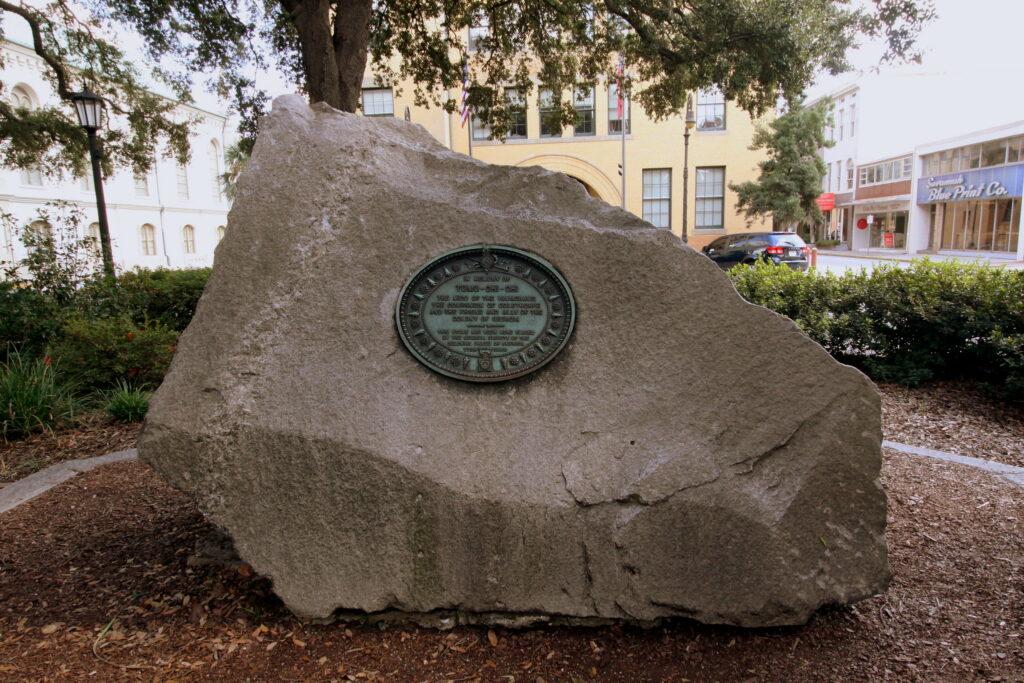
The mound of stones honoring his final resting place in Savannah was removed in the early 1880s, and as a replacement, a large granite boulder with a decorative copper plate was installed southeast of the original structure with a dedication ceremony on April 21, 1899. The Georgia Historical Commission later placed a large marker in Savannah’s Wright Square, which details the achievements of the Yamacraw leader.
In 2021 a large bronze statue of Tomochichi was erected in a temporary location near Midtown Atlanta. Modeled after English portraits painted in 1734, the statue elicited controversy over Tomochichi’s physical depiction and renewed debate about his historical legacy.


